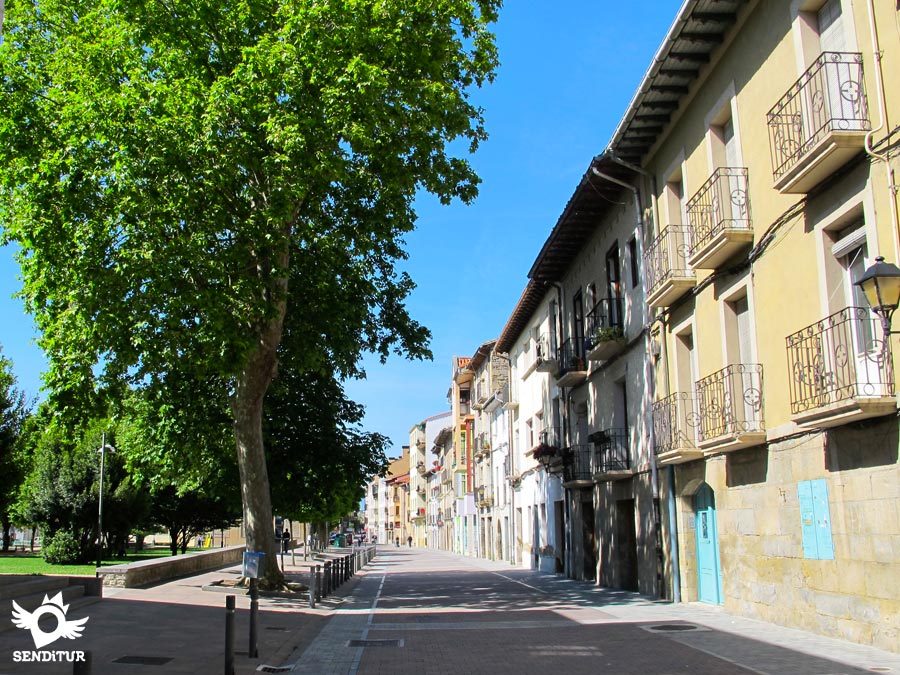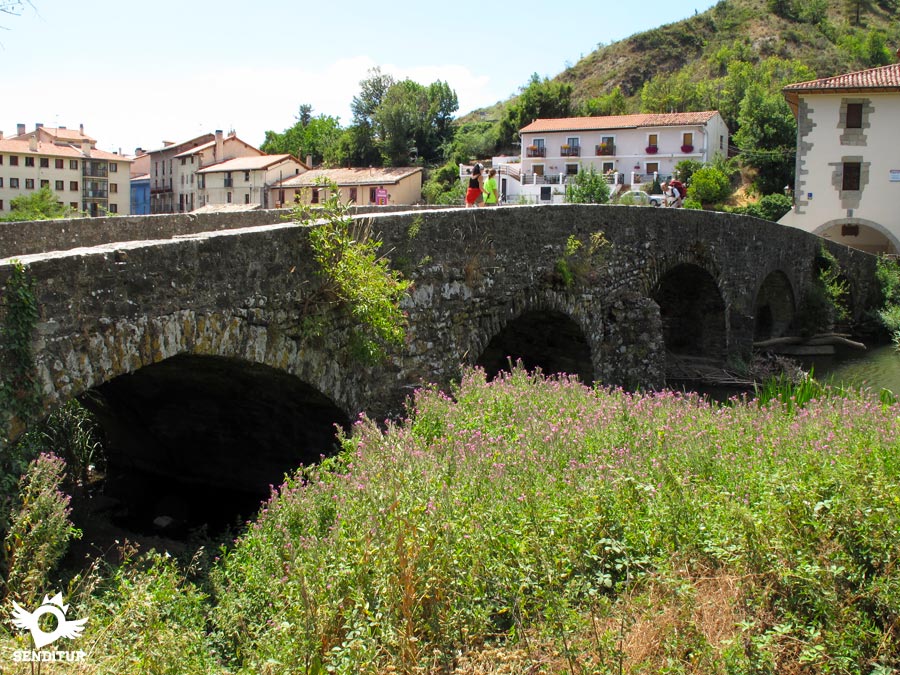It is situated on both banks of the river Ultzama, which crosses the municipality from north to south and occupies an open, flat space. In the 12th century King Sancho VI the Wise founded a town next to the village of Atarrabia which, in order to attract settlers, was granted the same privileges as the new borough of San Nicolás de Pamplona. As was the custom at the time, the king baptised the town with a name and gave it the of Villa noua (New Town). Shortly after ascending to the throne, Theobald II confirmed these privileges in 1254. Taking into account the deaths and poverty that the town had suffered during the ten years of the war, John II forgave him the annual census that was given to the king for each house, in accordance with the founding charter.

Throughout the Middle Ages and up until the 17th century the town belonged to the Sangüesa merindad, but in the second half of that century it already figured within the merindad of Pamplona or the Mountains. In the 19th century, the town was the scene of war and its population took part in the wars waged by the French Revolution and the Carlist wars. As a result, the town centre was demolished. Later, with the period of industrialisation and improvements in communications, the current Villava - Atarrabia was formed.
Villava-Atarrabia has lost its medieval configuration, practically nothing remains of its ancient urban fabric. The main street, however, retains a series of houses from the sixteenth to eighteenth centuries, some of them emblazoned. The Town Hall is a 17th century construction and conserves two coats of arms of the town, one dating from 1545 and the other from 1779. Next to the Town Hall, in the place where the church of San Andrés was built in the 13th century, it was rebuilt in turn in the 17th century, in 1966 a new one was built under the same title..

From that primitive construction, the "Soledad Chapel" is preserved, with a circular floor plan. Also of interest is the Rollo, erected in the fifteenth or sixteenth century probably on the site it currently occupies. This column, more than 2 meters high, is a jurisdictional symbol and of communal freedom of the town of Villava-Atarrabia, possibly also, although there are no testimonies, was used as a pillory or place of execution. In the streets Mayor and Serapio Huici we can see several palaces and buildings from the early twentieth century. And like leaving us the Casa Motza, Renaissance palace of the sixteenth century, formerly known as "Palacio de Andosilla", because its builder was the local nobleman, Pedro de Andosilla.
The patron saint fiestas in honour of the Virgen del Rosario are celebrated on the first Sunday in October and Saint Andrew, the town's patron saint, is celebrated on 30 November.

On one of the days during the main festivities of Villava/Atarrabia, the costillada popular is held, in which the villagers get together for a communal lunch based on lamb and pork ribs. The town council provides the necessary spits, bread and wine, and it is the villagers themselves who have to bring their own food and utensils to prepare it.
In the "basilica of the Trinity", half a league away, there were two confraternities of priests and laymen, who maintained their vicar, chaplain, mayor and prison for the exercise of all jurisdiction in their district.

Legend or history? There was in Villava-Atarrabia in the middle of the 16th century a famous healer named Juan Périz de Igúzquiza, alias "El Indiano". Surgeons and doctors of the time denounced him in the inquisitors of Calahorra accusing him that he was curing fresh and old sores and pains of all kinds and quality, and making soaps and spells. This healer received his patients in the inn and his remedies were based on applying cold water cloths and then read the Gospels. In spite of the persecution of his enemies, it is said that he had a large clientele.
Villava-Atarrabia is perfectly communicated with Pamplona-Iruña, 4 km away, it is linked to Burlada-Burlata as an urban continuum. The PA-30 ring road that goes around Pamplona-Iruña provides several accesses to Villava-Atarrabia, such as the NA-2306 or the NA-2517.
A bus line covers the route, starting from the Plaza Príncipe de Viana in the end of Pamplona and from the Avenida Serapio Huici in the village.
SENDITUR is not responsible for any variation in the information described, as well as for the misuse of its guides and recommends that everyone be responsible and prudent in carrying out the activity. Likewise, we invite you to document yourself with books and specialized guides to complement the information described. From the commitment of SENDITUR with Nature and the respect to the balance of the environment, SENDITUR urges you to travel in a responsible way, with low environmental impact and respecting at all times the Natural, Cultural and Social environment wherever you go. For any suggestion, SENDITUR invites you to send an email to .
Continue watching …